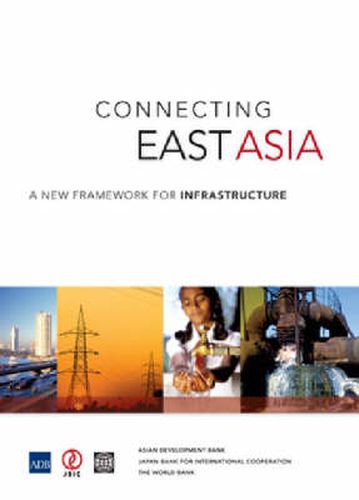Readings Newsletter
Become a Readings Member to make your shopping experience even easier.
Sign in or sign up for free!
You’re not far away from qualifying for FREE standard shipping within Australia
You’ve qualified for FREE standard shipping within Australia
The cart is loading…






Much of East Asia continues to grow rapidly, driven to a considerable extent by China. Urbanization is proceeding at pace. Demand for infrastructure services is increasing massively, particularly in cities. Much of the demand comes from the newly urbanized poor. Infrastructure has to meet their needs, but has also to continue to provide the underpinnings for the region’s growth. The complexity of responding to these demands is greater than ever, and the cost of getting things wrong very high. Poorly conceived infrastructure investments today would have a huge environmental, economic, and social impact - and be very costly to fix later. Neglecting the infrastructure needs of people remaining in poor parts of East Asia - particularly in rural areas, and in isolated countries of the region; and falling to include them in growth, would also be costly, in human and political terms. This study is about East Asia, and it’s about infrastructure. It’s about poverty and growth, and it’s about transport, water, sanitation, power, and telecommunications - both the infrastructure, and the infrastructure services. Infrastructure is only one part of the development challenge, but its impacts are among the most important. Connecting East Asia looks at the role that infrastructure has played in supporting East Asia’s growth and looks ahead at what the challenges are for the future, and how to approach them.
$9.00 standard shipping within Australia
FREE standard shipping within Australia for orders over $100.00
Express & International shipping calculated at checkout
Stock availability can be subject to change without notice. We recommend calling the shop or contacting our online team to check availability of low stock items. Please see our Shopping Online page for more details.
Much of East Asia continues to grow rapidly, driven to a considerable extent by China. Urbanization is proceeding at pace. Demand for infrastructure services is increasing massively, particularly in cities. Much of the demand comes from the newly urbanized poor. Infrastructure has to meet their needs, but has also to continue to provide the underpinnings for the region’s growth. The complexity of responding to these demands is greater than ever, and the cost of getting things wrong very high. Poorly conceived infrastructure investments today would have a huge environmental, economic, and social impact - and be very costly to fix later. Neglecting the infrastructure needs of people remaining in poor parts of East Asia - particularly in rural areas, and in isolated countries of the region; and falling to include them in growth, would also be costly, in human and political terms. This study is about East Asia, and it’s about infrastructure. It’s about poverty and growth, and it’s about transport, water, sanitation, power, and telecommunications - both the infrastructure, and the infrastructure services. Infrastructure is only one part of the development challenge, but its impacts are among the most important. Connecting East Asia looks at the role that infrastructure has played in supporting East Asia’s growth and looks ahead at what the challenges are for the future, and how to approach them.